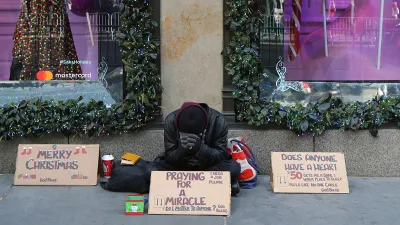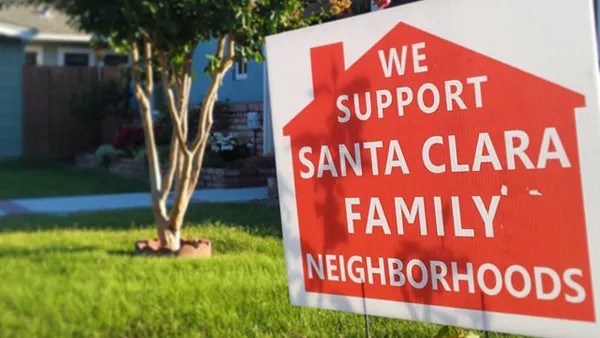Upzoning without addressing speculation and finance could exacerbate the housing crisis for the nation’s most vulnerable communities, a professor of urban planning warns.

Whether or not blanket upzoning policies, like California’s recently quashed SB 50, would address the state's housing affordability crisis is a question that's hotly contested and a debate that goes beyond the standard YIMBY vs. NIMBY narrative, according to Dr. Ananya Roy, professor of urban planning and founding director of the Institute on Inequality and Democracy at UCLA.
Dr. Roy studies how market forces and public policy combine to drive displacement and housing inequality in cities around the world. In an exclusive interview with The Planning Report, Roy discusses how failing to address the structural causes of housing precarity, including speculation by major financial actors, could exacerbate the housing crisis for the communities who are already most vulnerable to its impacts.
Lost between the YIMBY supply-side rhetoric and the NIMBY "neighborhood character" mantra is a critical look at how predatory financial practices lead to housing insecurity and homelessness in the first place, Roy says:
"At the risk of oversimplification, the story goes a bit like this: What we saw with the foreclosure crisis and the Great Recession was, of course, predatory lending by large banks. That predatory, deregulated lending led to a massive loss of wealth and homeownership for racial and ethnic minorities. There were whole cities and communities devastated by the vast reach of that crisis.
Those neighborhoods, as well as the neighborhoods we traditionally think of as the “inner city,” are now the sites of new forms of predatory financialization. Private equity firms such as Blackstone are buying up quite large amounts of property, including foreclosed single-family homes, and converting them into rental housing—and then, as research by scholars such as Desiree Fields shows, securitizing that housing and turning it into a speculative asset."
Without intentional efforts to curb these practices by regulating massive corporate landlords and enhancing tenant protections, Roy says, supply-side housing solutions like upzoning might ease the housing burden for the upper-middle class while making it far worse for low-income communities of color threatened by houselessness, eviction, and structural racism.
FULL STORY: UCLA's Ananya Roy on Housing Inequality & Market-Driven Displacement

Analysis: Cybertruck Fatality Rate Far Exceeds That of Ford Pinto
The Tesla Cybertruck was recalled seven times last year.

National Parks Layoffs Will Cause Communities to Lose Billions
Thousands of essential park workers were laid off this week, just before the busy spring break season.

Retro-silient?: America’s First “Eco-burb,” The Woodlands Turns 50
A master-planned community north of Houston offers lessons on green infrastructure and resilient design, but falls short of its founder’s lofty affordability and walkability goals.

Test News Post 1
This is a summary

Analysis: Cybertruck Fatality Rate Far Exceeds That of Ford Pinto
The Tesla Cybertruck was recalled seven times last year.

Test News Headline 46
Test for the image on the front page.
Urban Design for Planners 1: Software Tools
This six-course series explores essential urban design concepts using open source software and equips planners with the tools they need to participate fully in the urban design process.
Planning for Universal Design
Learn the tools for implementing Universal Design in planning regulations.
EMC Planning Group, Inc.
Planetizen
Planetizen
Mpact (formerly Rail~Volution)
Great Falls Development Authority, Inc.
HUDs Office of Policy Development and Research
NYU Wagner Graduate School of Public Service




























